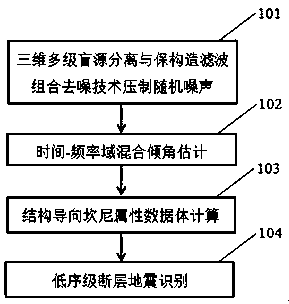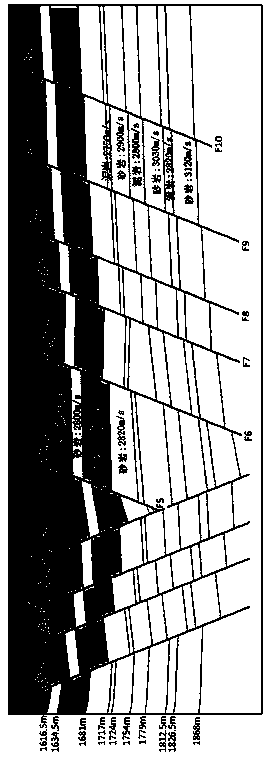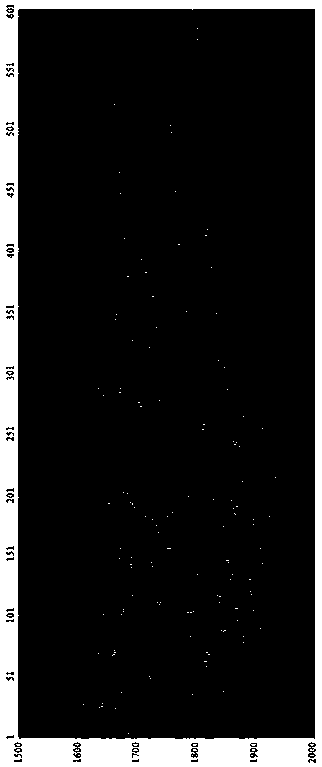New edge detection low-order fault identification method
A technology for edge detection and fault identification, applied in measurement devices, geophysical measurements, instruments, etc., can solve problems such as poor interface and reflection continuity, unfavorable for combined fracture systems, and difficult to identify.
- Summary
- Abstract
- Description
- Claims
- Application Information
AI Technical Summary
Problems solved by technology
Method used
Image
Examples
Embodiment 1
[0169] Example 1: Edge detection of low-sequence faults and identification of low-sequence faults in forward modeling simulation sections for geological models of low-sequence faults.
[0170] Step 1, designing a low-order fault geological model ( figure 2 ), image 3 is the forward modeling simulation profile, for the simulation profile with 50% noise added ( Figure 4 ), applying the three-dimensional multi-level blind source separation technology in the time-space domain to obtain the effective signals from the first-level blind source separation ( Figure 5 ), the effective signal separated from the secondary blind source ( Image 6 ), the effective signal separated from the three-level blind source ( Figure 7 ) and the finally separated noise ( Figure 8 ),from Figure 8 It can be seen that the random noise separated by the blind source basically does not contain the effective signal, thus effectively ensuring that the effective information is basically not lost af...
Embodiment 2
[0178] Example 2: Low-order fault identification for edge detection in actual work areas.
[0179] Step 1, the original seismic data volume ( Figure 14 ), in the time-space domain, the combined denoising process based on 3D multilevel blind source separation and structure-preserving filtering is applied to obtain the denoised seismic data volume ( Figure 15 ), the signal-to-noise ratio of the effective signal is significantly enhanced, the event axis of the reflected wave becomes clear and continuous, and the stability of the transverse waveform feature is improved.
[0180] Step 2, apply the multi-channel coherent algorithm in the time domain to perform dip search and estimate the formation dip; in the frequency domain, apply the time delay of the formation dip shown in the seismic record, and perform Fourier transform time-delay characteristics on it to estimate the formation dip;
[0181] Step 3, based on the time-frequency domain hybrid dip scan, calculate the structure...
PUM
 Login to View More
Login to View More Abstract
Description
Claims
Application Information
 Login to View More
Login to View More - R&D
- Intellectual Property
- Life Sciences
- Materials
- Tech Scout
- Unparalleled Data Quality
- Higher Quality Content
- 60% Fewer Hallucinations
Browse by: Latest US Patents, China's latest patents, Technical Efficacy Thesaurus, Application Domain, Technology Topic, Popular Technical Reports.
© 2025 PatSnap. All rights reserved.Legal|Privacy policy|Modern Slavery Act Transparency Statement|Sitemap|About US| Contact US: help@patsnap.com



